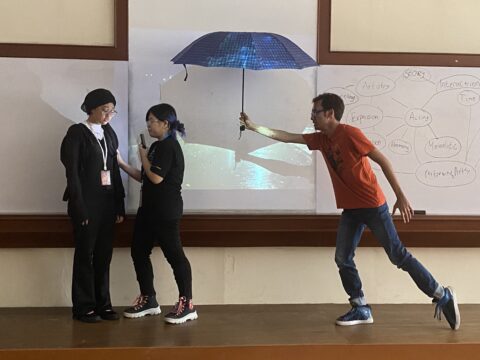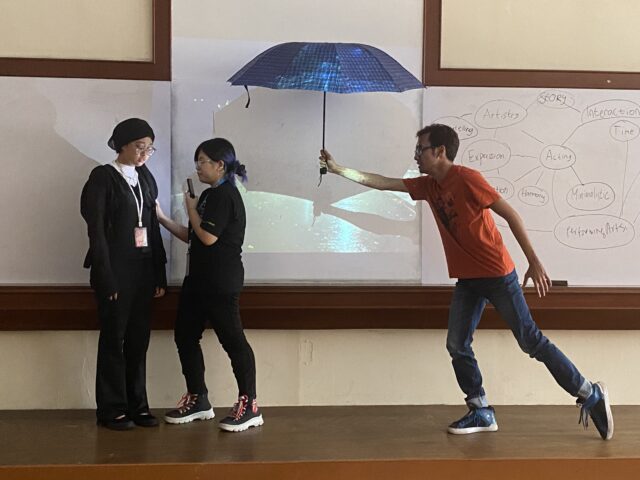The Role of Scenography and Freeze Frames in Performing Arts
Authored by Michael Angelus Grean Tekwan ( B25)
In today’s theater, the aspects of visual storytelling and a variety of innovative techniques are incredibly important for increasing audience engagement. Of these new techniques, two have recently been gaining recognition for deepening both the performers and viewer’s experience: scenography and the freeze frame drama strategy. Such methods are not only applied to professional shows but also prove very helpful in educational institutions for students to gain a more profound understanding of what theater means.
Scenography involves everything that is useful in setting an atmosphere and mood for the theatrical presentation: light, sound, set, and costume design. According to Merriam-Webster, it is “the art of perspective representation especially as applied to the design and painting of stage scenery”. Rather than just simply designing a set, it is more about creating an immersive environment that conveys the mood, themes, and emotions of a play. Scenography is both an aesthetic and a practical discipline that turns an innocent stage space into an engaging narrative medium.
Meanwhile, freeze frame drama strategy is a method wherein the actors keep themselves in a ‘frozen’ position, where one moment is emphasized to show an important part of the scene or express emotion of characters. Freezing can be quickly done by any age group and is sometimes called still images or tableaux. Participants create an image using their bodies-with no movement. Freeze frames can be made by individuals or groups of any size. This technique is particularly helpful in drama education because it allows students to break down complex scenes and pinpoint exactly where in that scene the major character decisions or narrative shifts occur. It encourages reflection and analysis, thus giving performers a deeper connection to their roles and the overall story being told.
With the application of scenography and the freeze frame drama strategy in theater education, the students will improve not only their performance but learn also how to enhance their storytelling by using space, movement, and design productively. Scenography, in a way, forms the spatial relationship between the audience and the stage, which is so crucial in both traditional theaters and experimental or outdoor performances. It also plays a critical role in adapting unconventional spaces, which enables much more immersive and creative audience-narrative interaction. Freeze frame drama strategy: These can be used for communicating any ideas or telling a story. The participants can represent anything from people and objects to abstract such as emotion. As a result, this will allow the performers to take their time in performance and reflect on the important moments; thus, it will enhance their emotional connection with the story. Freeze frames also often let much shier performers build confidence because they don’t have to remember lines. Putting these techniques together, they build creativity, collaboration, and critical thinking-skills highly wanted by aspiring theater professionals in the evolving arts landscape today.




Comments :